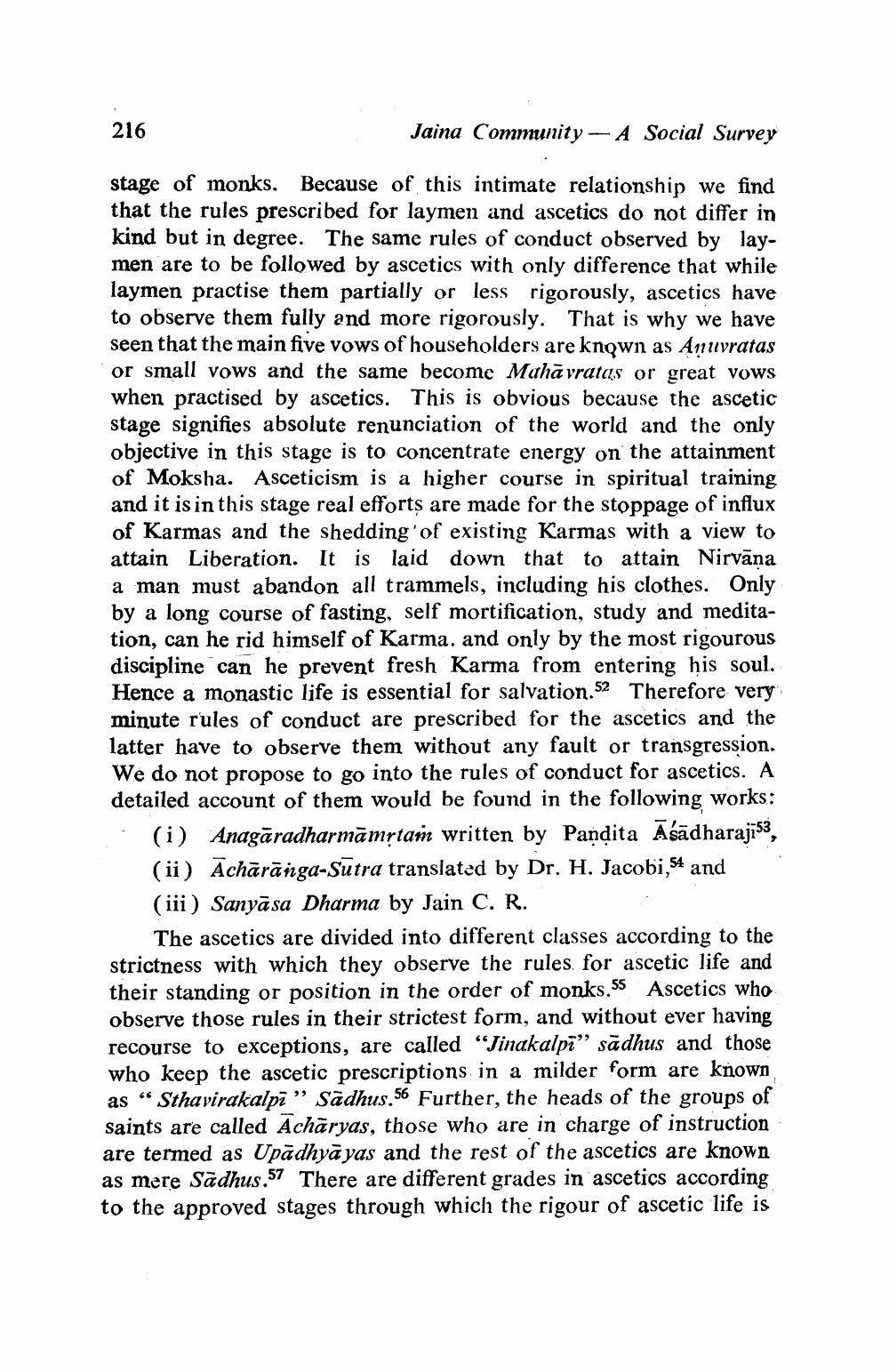________________
216
Jaina Community - A Social Survey
stage of monks. Because of this intimate relationship we find that the rules prescribed for laymen and ascetics do not differ in kind but in degree. The same rules of conduct observed by laymen are to be followed by ascetics with only difference that while laymen practise them partially or less rigorously, ascetics have to observe them fully and more rigorously. That is why we have seen that the main five vows of householders are known as Anuratas or small vows and the same become Mahā vratas or great vows when practised by ascetics. This is obvious because the ascetic stage signifies absolute renunciation of the world and the only objective in this stage is to concentrate energy on the attainment of Moksha. Asceticism is a higher course in spiritual training and it is in this stage real efforts are made for the stoppage of influx of Karmas and the shedding of existing Karmas with a view to attain Liberation. It is laid down that to attain Nirvāna a man must abandon all trammels, including his clothes. Only by a long course of fasting, self mortification, study and meditation, can he rid himself of Karma. and only by the most rigourous discipline can he prevent fresh Karma from entering his soul. Hence a monastic life is essential for salvation.52 Therefore very minute rules of conduct are prescribed for the ascetics and the latter have to observe them without any fault or transgression. We do not propose to go into the rules of conduct for ascetics. A detailed account of them would be found in the following works:
(i) Anagāradharmāmrtam written by Pandita Āsādharaji53, (ii) Achārānga-Sūtra translated by Dr. H. Jacobi,54 and (iii) Sanyāsa Dharma by Jain C. R.
The ascetics are divided into different classes according to the strictness with which they observe the rules for ascetic life and their standing or position in the order of monks.55 Ascetics who observe those rules in their strictest form, and without ever having recourse to exceptions, are called “Jinakalpī” sādhus and those who keep the ascetic prescriptions in a milder form are known as “Sthavirakalpī” Sadhus. 56 Further, the heads of the groups of saints are called Āchāryas, those who are in charge of instruction are termed as Upadhyā yas and the rest of the ascetics are known as mere Sädhus.57 There are different grades in ascetics according to the approved stages through which the rigour of ascetic life is




